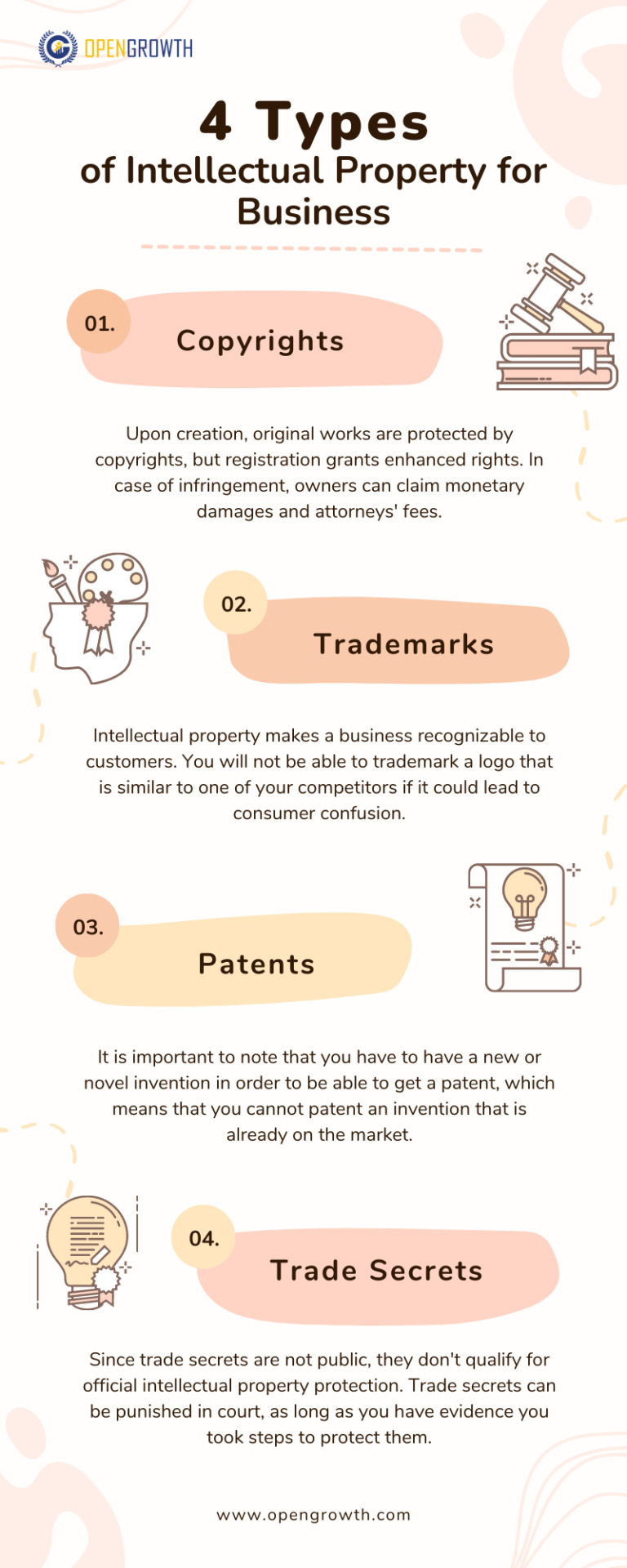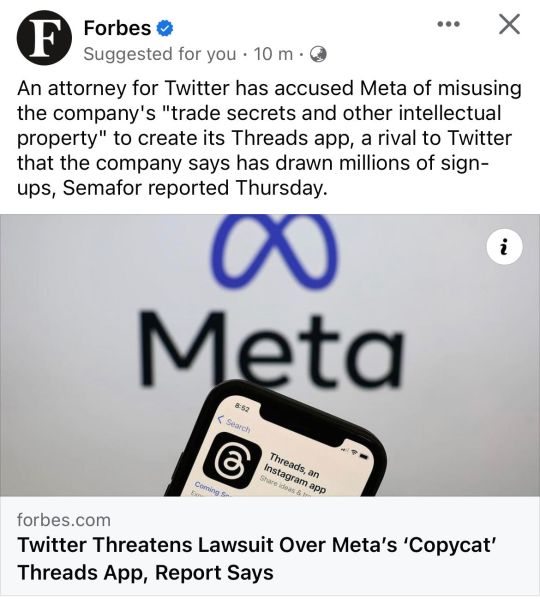#Trade secrets
Text
HELLO? HOW DO I ACCESS "FUCK‐WEB"
3K notes
·
View notes
Photo

Adorkable Twilight & Friends - “Trade Secrets”
https://www.patreon.com/adorkabletwilightandfriends
https://twitter.com/AdorkableTwili1
http://adorkabletwilightandfriends.wikia.com
http://adorkabletwixfriends.deviantart.com
#trade secrets#adorkable twilight#adorkable#adorkable twilight & friends#comic#slice of life#bedroom#bed#book#reading#sitting#cute#kissing#love#romance#family#patience#conversation#door#nervous#embarassed#twilight sparkle#cat#pinenut#spike#sit
113 notes
·
View notes
Text
So I finally watched Wonka… and I’m probably a little late to this party, but you know what I would have liked?
A movie about a man losing his mind over corporate espionage and the insane lengths he would go to to protect his trade secrets.
You know… like the canonical Willy Wonka, who closed his factory for years after his employees sold his secrets to his rivals…
#they wasted a perfectly good back story#willy wonka#wonka#wonka 2023#willy wonka and the chocolate factory#charlie and the chocolate factory#corporate espionage#trade secrets
9 notes
·
View notes
Text
Why is the recipe a secret?
Is it dangerous?
Is it an infohazard? A cognitohazard? Or something like that?
Does it contain a great secret that must never be made known?
#dougie rambles#personal stuff#my poor attempt at a joke#secret ingredient#secret recipe#trade secrets#vagueness#vagueposting#what#no context#this sounded funnier in my head#shitpost
5 notes
·
View notes
Text
Writing Related Questions
Am actually working on some of fics in progress (Day Pass, Trade Secrets, Ghoulies And Ghosties, random writing for NaNoWriMo)
So not just plot bunnies I am releasing into the wild, but thoughts actively being typed up. Answers are useful.
What are popular Gotham street foods? - Trade Secrets
What songs do the Batfam sing at karaoke? -Ghoulies And Ghosties, NaNoWriMo
Where would Catwoman and Riddler hang out? Without relapsing into stealing things. Was going to have them go to an art museum, but am debating the wisdom of this (Day Pass)
#writing questions#trade secrets#day pass#Ghoulies and ghosties#Writing#Hung up on small details#Yes i am working on my works in progress#And not just feeding the plot bunnies after midnight.#batman#dc universe
6 notes
·
View notes
Text
Trade Secrets
I’ve posted the long promised prank war fic...
Snippet:
About an hour later, Sirius went up to his room to get a book Remus wanted from his things and as he turned the doorknob, the doorknob shot blue paint at him. “Merlin!” Sirius exclaimed. He could hear laughter coming from upstairs. He rolled his eyes and climbed the stairs to the room where Fred and George were sleeping. He peeked in.
“Oh! It works. Listen,” Fred said, handing Sirius an Extendable Ear, which settled in his ear after weaving itself through his hair for a moment.
“Is this your idea of saying ‘thank you’? Sirius asked, caught between amusement and annoyance.
“We had to see if they worked,” George said innocently, but with a smile pulling at his mouth. “We heard you loud and clear.”
“Well…glad to be of help, “ Sirius said tartly as he made his way out of the room.
He found Remus outside of his room, which he supposed was their room now, looking confused. “Oh. Did I leave that book-” Remus started, then he took in the paint on Sirius’s shirt and in his hair. “What happened to you?”
“What happened to me? After I helped them with the ears, Fred and George bewitched the doorknob to spray paint at me…or you, I suppose. I don’t think it was specific,” Sirius said.
Remus burst out laughing. “Thanks a lot, Moony,” Sirius griped, as he tapped the doorknob with his wand before opening it.
“Come here,” Remus said. He pulled out his wand and vanished the paint. “No harm done. I suppose it was their way of saying thank you?”
“Yes,” Sirius said sullenly. After a moment, he said, “Moony. We have to get them back.”
Read on AO3.
40 notes
·
View notes
Photo

Intellectual Property is any innovation or creation that originates in the mind. It can be an art or literature, symbol or design, name or image that is used for the best level of protection. To protect intellectual property exclusive rights are given to those who generate it. It applies to business models and ensures the intentional and accidental infringement that continues to grow.
Read more:
https://www.opengrowth.com/article/four-types-of-intellectual-property-for-businesses
#intellectual property#innovation#Business#small business#business tips#trademark#trade secrets#copyright#patents#opengrowth
2 notes
·
View notes
Text
Unveiling the Power of Intellectual Property Rights: How IP Protection Safeguards Innovation and Creativity

Introduction to Intellectual Property Rights (IPR)
As an entrepreneur and innovator, I have always been fascinated by the concept of intellectual property rights (IPR) and the crucial role they play in safeguarding innovation and creativity. Intellectual property is a term that encompasses a wide range of intangible assets, such as inventions, designs, trademarks, and creative works. In this article, I will explore the importance of intellectual property protection, the different types of intellectual property, the laws and regulations governing intellectual property, and the steps you can take to protect your intellectual property rights.
Importance of Intellectual Property Protection
Intellectual property protection is vital for several reasons. Firstly, it encourages and rewards innovation and creativity. When inventors and creators know that their ideas and creations will be protected, they are more motivated to invest their time, resources, and expertise into developing new technologies, products, and artistic works. Intellectual property protection also fosters economic growth by allowing inventors and creators to monetize their creations through licensing or selling their intellectual property rights. This, in turn, stimulates competition and drives further innovation and creativity.
Furthermore, intellectual property protection provides legal recourse for individuals and companies whose intellectual property rights have been infringed upon. It allows the rightful owners to take action against those who use, copy, or imitate their intellectual property without permission. By enforcing intellectual property rights, we ensure a level playing field for businesses and creators, promoting fair competition and preventing unfair advantage.
Understanding Intellectual Property and Its Different Types
To fully grasp the importance of intellectual property protection, it is crucial to understand the different types of intellectual property. There are four main categories: patents, trademarks, copyrights, and trade secrets.
1. Patents: Patents protect inventions and technological advancements. They confer exclusive rights to inventors over their creations, prohibiting unauthorized production, use, or sale of the patented innovation. Patents encourage innovation by providing a limited monopoly to inventors, allowing them to recoup their investments and reap the benefits of their inventions.
2. Trademarks: Trademarks are distinctive signs, symbols, or logos that distinguish the goods or services of one entity from another. They are essential for building brand recognition and reputation. Trademarks can be registered, granting the owner exclusive rights to use the mark about specific goods or services. This prevents others from using similar marks that may confuse consumers.
3. Copyrights: Copyrights protect original creative works such as literary, artistic, musical, or architectural works. They give the creators exclusive rights to reproduce, distribute, display, and perform their works. Copyright protection is automatic upon creation, but registering a copyright provides additional legal benefits, including the ability to sue for infringement.
4. Trade Secrets: Trade secrets are valuable and confidential information that gives a business a competitive advantage. This can include formulas, processes, customer lists, or marketing strategies. Unlike the other types of intellectual property, trade secrets are protected as long as they remain secret. Companies protect trade secrets through non-disclosure agreements and other confidentiality measures.
Different Types of Intellectual Property Rights (IPR)
Now that we have a basic understanding of the different types of intellectual property, let us delve deeper into the various intellectual property rights (IPR) associated with each category.
1. Patents: Patent rights grant inventors the exclusive right to make, use, and sell their invention for a limited period, typically 20 years from the filing date. During this time, others are prohibited from using the patented invention without the inventor's permission. To obtain a patent, inventors must disclose the details of their invention to the patent office, ensuring that the patented technology becomes part of the public knowledge once the patent expires.
2. Trademarks: Trademark rights allow the owner to use a distinctive mark to identify and distinguish their goods or services from others. Trademark protection can be obtained by registering the mark with the appropriate intellectual property office. Registered trademarks have nationwide or international protection, depending on the jurisdiction. Trademark owners can prevent others from using identical or similar marks that may confuse consumers.
3. Copyrights: Copyright rights provide creators with exclusive control over the reproduction, distribution, display, and performance of their original works. Copyright protection is automatically granted upon creation, but registering a copyright provides additional legal benefits. Copyright registration establishes a public record of the copyright claim and enables the owner to sue for infringement in court.
4. Trade Secrets: Trade secret rights protect valuable and confidential business information. The owner of a trade secret must take reasonable measures to keep the information secret, such as implementing non-disclosure agreements and restricting access to authorized personnel. Trade secret rights are not limited in time, as long as the information remains secret.
Intellectual Property Laws and Regulations
To ensure consistent protection and enforcement of intellectual property rights, various laws and regulations have been established at national and international levels. These laws provide a legal framework for the registration, protection, and enforcement of intellectual property rights, ensuring that inventors, creators, and businesses are adequately protected.
At the national level, each country has its intellectual property laws and regulations. These laws define the scope of protection, the requirements for registration, and the penalties for infringement. The laws also establish intellectual property offices responsible for granting and maintaining intellectual property rights. These offices play a crucial role in the protection and administration of intellectual property at a national level.
On the international stage, several treaties and agreements aim to harmonize intellectual property laws and facilitate cross-border protection. One of the most significant international treaties is the Agreement on Trade-Related Aspects of Intellectual Property Rights (TRIPS), which sets minimum standards for intellectual property protection and enforcement. TRIPS has been adopted by the World Trade Organization (WTO) and is binding on all member countries.
Intellectual Property Infringement and Its Consequences
Intellectual property infringement occurs when someone uses, copies, or imitates intellectual property without the permission of the rightful owner. Infringement can take various forms, including the unauthorized use of patented inventions, copying copyrighted works, or using trademarks that are confusingly similar to existing marks.
Intellectual property infringement can have serious repercussions. Infringers may face legal action, including injunctions, damages, and even criminal prosecution. In some cases, the infringing party may be required to pay substantial compensation to the rightful owner for the unauthorized use of their intellectual property. Additionally, the reputation and goodwill of the infringing party may suffer, leading to loss of customers and market share.
Intellectual Property Offices and Their Role in Protecting IP
Intellectual property offices play a vital role in the protection and administration of intellectual property rights. These offices are responsible for granting and maintaining intellectual property rights, ensuring that inventors, creators, and businesses are adequately protected.
The functions of intellectual property offices vary depending on the country, but they generally include the examination and registration of patent applications, trademarks, and copyrights. Intellectual property offices also provide guidance and support to applicants, helping them navigate the complex process of obtaining and enforcing intellectual property rights. Additionally, these offices maintain public databases of registered intellectual property, allowing interested parties to search and verify the existence of specific rights.
Steps for Protecting Your Intellectual Property Rights
Now that we understand the importance of intellectual property protection and the various types of intellectual property rights, let's explore the steps you can take to safeguard your intellectual property.
Identify and document your intellectual property: Start by identifying and documenting all your intellectual property. This includes inventions, designs, product names, logos, creative works, and trade secrets. Keep detailed records of the creation and development process, including dates, versions, and any relevant documentation.
Conduct a comprehensive search: Before filing for intellectual property protection, it is essential to conduct a thorough search to ensure that your invention or creative work is indeed unique and does not infringe upon existing rights. This search will help you determine if your intellectual property is eligible for protection and whether any similar intellectual property already exists.
File for intellectual property protection: Once you have conducted a search and confirmed the uniqueness of your intellectual property, it is time to file for protection. The process and requirements for filing vary depending on the type of intellectual property and the jurisdiction. Consult with a qualified intellectual property attorney or agent to ensure that your application is complete and accurately represents your intellectual property.
Enforce your intellectual property rights: Obtaining intellectual property rights is just the first step. To fully protect your intellectual property, you must actively enforce your rights against potential infringers. Monitor the market for unauthorized use or imitation of your intellectual property and take prompt legal action when necessary.
Renew and maintain your intellectual property: Intellectual property rights have limited durations, and it is essential to renew and maintain your rights to ensure ongoing protection. Stay informed about the renewal requirements and deadlines for your intellectual property rights and take the necessary steps to maintain them.
Benefits of Registering Your Intellectual Property
While some forms of intellectual property protection are automatic upon creation, such as copyrights, registering your intellectual property provides additional legal benefits. Here are some advantages of registering your intellectual property:
Public record: Registering your intellectual property creates a public record of your rights. This record can be used as evidence in case of infringement disputes and provides a clear indication to others that the intellectual property is protected.
Presumption of validity: Registering your intellectual property establishes a legal presumption of validity. This means that in case of a legal dispute, the burden of proof will be on the infringing party to demonstrate that your intellectual property is invalid or not entitled to protection.
Enhanced enforcement options: Registered intellectual property rights provide enhanced enforcement options. For example, copyright registration is a prerequisite for filing a lawsuit for copyright infringement, while registered trademarks enjoy nationwide or international protection.
Deterrence: Registering your intellectual property can act as a deterrent to potential infringers. The existence of a registered intellectual property right sends a clear message that you are serious about protecting your creations and will take legal action against unauthorized use.
Intellectual Property Rights and Innovation
Intellectual property rights are closely intertwined with innovation. These rights provide inventors, creators, and businesses with the incentives and rewards necessary to invest in research, development, and creative endeavors. By granting exclusive rights to intellectual property, society encourages individuals and companies to take risks and push the boundaries of knowledge and creativity.
Moreover, intellectual property rights foster a culture of openness and collaboration. By disclosing their inventions and creative works, inventors and creators contribute to the collective body of knowledge, enabling further innovation and advancement. Intellectual property rights strike a delicate balance between the need for protection and the promotion of access to knowledge, allowing society to benefit from new technologies, products, and artistic expressions.
Challenges and Controversies Surrounding Intellectual Property
While intellectual property rights are essential for fostering innovation and creativity, they are not without their challenges and controversies. One of the key debates revolves around the balance between intellectual property protection and access to knowledge. Critics argue that overly restrictive intellectual property regimes can hinder innovation, particularly in sectors such as healthcare and technology. They claim that excessive patent protection can lead to high drug prices, limit access to essential medications, or stifle competition in the technology sector.
Another challenge is the enforcement of intellectual property rights in the digital age. With the proliferation of the internet and digital technologies, it has become easier to reproduce and distribute copyrighted works without authorization. This has led to widespread copyright infringement and challenges in enforcing intellectual property rights in the online environment.
Conclusion: The Significance of Intellectual Property Rights in Fostering Innovation and Creativity
In conclusion, intellectual property rights play a crucial role in safeguarding innovation and creativity. These rights provide inventors, creators, and businesses with the incentives and rewards necessary to invest in research, development, and artistic endeavors. By protecting intellectual property, we encourage a culture of innovation, stimulate economic growth, and ensure fair competition.
Understanding the different types of intellectual property, the laws and regulations governing intellectual property, and the steps for protecting intellectual property rights is essential for anyone involved in innovation, entrepreneurship, or creative pursuits. By taking the necessary measures to protect our intellectual property and respecting the intellectual property rights of others, we can contribute to a vibrant and thriving ecosystem of innovation and creativity.
#ipr#intellectual property#intellectual property rights#trademark#copyright#patent#copyrightlaw#copyright registration#trademarkregistration#patent registration#trade secrets
0 notes
Text



Wait til I come out with my advanced version: Putting a 2 at the end of everything
#dicking around#lol#this is true though#insights into my creative process#pretty sure I learned this from Futurama#recipes#trade secrets#science fiction#jcink#jcink rp
0 notes
Text
Trade secrets are essential in today’s globalised economy. Because of the basic criteria of thorough disclosure, developers/inventors may refuse to have their product/process patented. Trade Secret is a one-step answer to all of these problems. Unfortunately, the concept of providing trade secret protection has only seen development in developed economies.
0 notes
Text
1 note
·
View note
Text

1 note
·
View note
Text
Trade Secrets Part 23
"How long is your break?"
Selina turned on the bench where we sat watching the ducks.
"Twenty five days."
She took a bite of the Gotham round in her hand, cheese running down the side of the pretzel that was unique to Gotham. Flat soft pretzel circles made out of everything bagel dough. Every stadium, park, and street cart in Gotham served them sliced like sandwiches or dipped in cheese and drizzled with mustard like the rounds Selina had bought for us as we hung out in the park.
"Hey!"
The shout had both of us looking up. Instinctively, I looked towards where Dad sat, still deep in the middle of a chess game.
But it was Harvey running towards us, waving, a smile on his face.
Both of us waved back as Harvey came over to the bench.
Something seemed wrong though. It wasn't obvious enough to turn heads, but something felt off about how he moved. The sharper, shorter, quicker steps, the rounded shoulders, and worry crease between his brows didn't seem quite right.
But as Harvey reached us, hands fiddling with the coin in his pocket as he watched some ducklings imperiously trying to beg for bread, I thought I had imagined his odd gait.
"Summer break for you too?"
"Twenty five glorious days of it." Selina stretched her arms overhead, pointing her toes like a dancer. "What are your plans, Harvey?"
"I'm going to camp, I guess." He looked out at the ducks, racing to get a piece of bread from the water. "My parents signed me up for a camp my therapist recommended. To deal with some things."
I thought about Mr. Dent yelling at Harvey outside of the church and thought that some time at camp, away from his parents, sounded like it might be good for Harvey. Even if he didn't sound too enthusiastic about it.
"Are you going to have time to hang out before you go to camp?"
"Yeah. I mean, I should."
"Great! We should all hang out. Do you think we could have a movie night?"
Harvey shifted his feet. "With Bruce too?"
Selina rolled her eyes "Of course, with Bruce too."
Harvey moved his feet again, nervously. I nearly asked about it, but then, he took a breath and stopped.
"Okay, that sounds good."
Harvey pulled the coin out of his pocket and flipped it, a little of that different stance coming back.
"Do you think all of us could hang out afterwards?"
"Sure."
I wanted to ask Selina if Harvey seemed like he was being a little weird to her, but I couldn't with Harvey standing right there.
I was really glad to see Dad walking over, and then I realized he was carrying over ice cream and I got distracted by the thought of eating ice cream.
I mean, it was summer and I was visiting out with friends and we were going to go to the movies and hang out.
But something about how Harvey was acting felt like a piece of bread hitting the water, rippling and distorting the person I knew for a second so that they felt different until the ripples smoothed out.
An insistent quack drew my attention, and a duck nibbled a forgotten bit of Gotham rounds while we joked and laughed, free to just hang out.
At least for a few weeks.
#batman#au fic#trade secrets#Writing#update#bruce wayne#zatanna#selina kyle#harvey dent#giovanni zatara#eventual
4 notes
·
View notes
Text
wow think i just saw the best description of what it feels like to be shot and no i will not elaborate
0 notes
Text
dragon inn 3 - "only you"
album
#music#synth#synthpop#new wave#cover#covers#dragon inn 3#only you#trade secrets#yaz#yazoo#bloop#bleep#Bandcamp
0 notes
Text
Fresh opportunity to Patent Applicants for complying with Biological Diversity
The Government of India has in order to provide an opportunity for complying with the Biological Diversity Act, 2002, issued an Office Memorandum dated September 10, 2018 providing directions to the National Biodiversity Authority in this regard.The National Biodiversity Authority (NBA) was established by the Government for implementing the Biological Diversity Act, 2002.
The NBA addresses issues of conservation and sustainable use of biological resources and fair and equitable sharing of benefits from its use by way of benefit sharing fee or royalty or sharing of financial benefits arising out of the commercial utilisation of such rights.
At the local level the NBA’s functions include documentation of biological diversity including preservation of habitats, conservation of landraces, folk varieties and cultivators, domesticated stocks and breeds of animals and microorganisms besides chronicling of knowledge relating to biological diversity.
Under section 6 of the Biological Diversity Act, prior approval has to be obtained from the NBA before applying for any intellectual property right in or outside India for any invention based on any research or information on a biological resource obtained from India. If a patent application is filed without prior permission of the NBA, the same may be obtained up to grant of patent.
The penalty for contravening section 6 is set out in section 55(1) of the NBA which provides that, whoever contravenes or abets the contravention of the provisions of section 6 shall be punishable with imprisonment for a term which may extend to five years, or with fine which may extend to ten lakh rupees. Under the Patents Act and Rules, while filing application for grant of patent in Form 1, the applicant is required to make a declaration that “the invention as disclosed in the specification uses the biological material from India and the necessary permission from the Competent Authority shall be submitted by me/us before the grant of patent to me/us”. For inventions not involving use of biological material, this declaration is to be cancelled out. Further, the complete specification should correctly disclose the source and geographical origin of any biological material used in the invention. Failure to meet these requirements is a ground for pre-grant and post-grant opposition u/s 25(1)(j) and 25(2)(j) of the Act, respectively.
A patent is liable to be revoked u/s 64(1)(j) if a false declaration is made regarding use of biological material from India or u/s 64(1)(p), if the complete specification does not disclose or wrongly mentions the source or geographical origin of biological material.It has been noted by the Government that a large number of entities though not fully aware of the provisions of the Biological Diversity Act, are desirous of complying with the same.
To meet this need and to facilitate and enhance implementation of the Biological Diversity Act, the Government has via Office Memorandum no. F.N. C-12025/8/15-CS-III dated September 10, 2018 issued directions that all such cases where prior approval was required but a person/entity has not obtained such approval, shall be heard by the Authority, which shall then pass appropriate orders with respect to acts that may have occurred in past.
The NBA is required to take decisions in such cases within a period of 100 days from the date of issuance of the Office Memorandum, including course of action for past matters. The NBA is required to be guided by the principles of natural justice and relevant judgments of Hon’ble Courts in similar matters. The NBA has also been directed to continue to spread awareness about the Biological Diversity Act to various stakeholders.
These initiatives of the Government will help provide stakeholders who were either unaware of the NBA approval requirement or have delayed in obtaining said approval, with an opportunity to complete the formalities required to process their patent applications further. Additionally, the benefit sharing between the stakeholders and the Government on mutually agreed terms will help in meeting the objectives of the Biological Diversity Act, including monetizing India’s biological resources and securing its conservation and sustainable use.In cases where application has been filed with the NBA but approval has not been received, the patent office has to keep applications pending for grant, even when all other requirements of patent grant have been met. The Government’s directions to the NBA to taken action in such cases within a period of 100 days will result in reducing the pendency in the patent office to this extent.
Visit Our Website:- https://jgbd.in/
1 note
·
View note